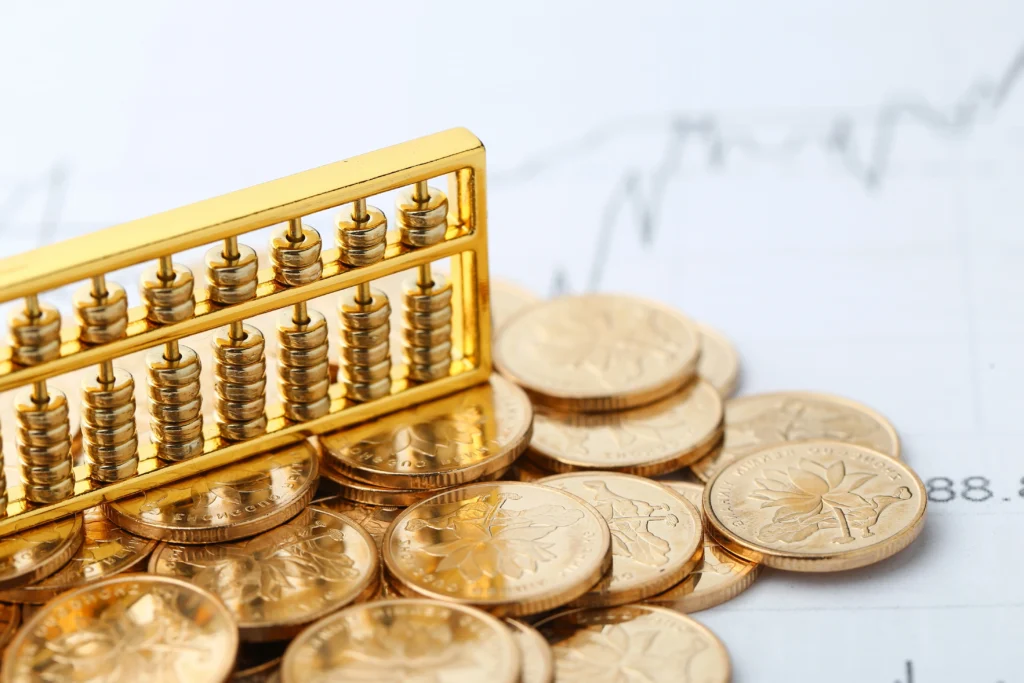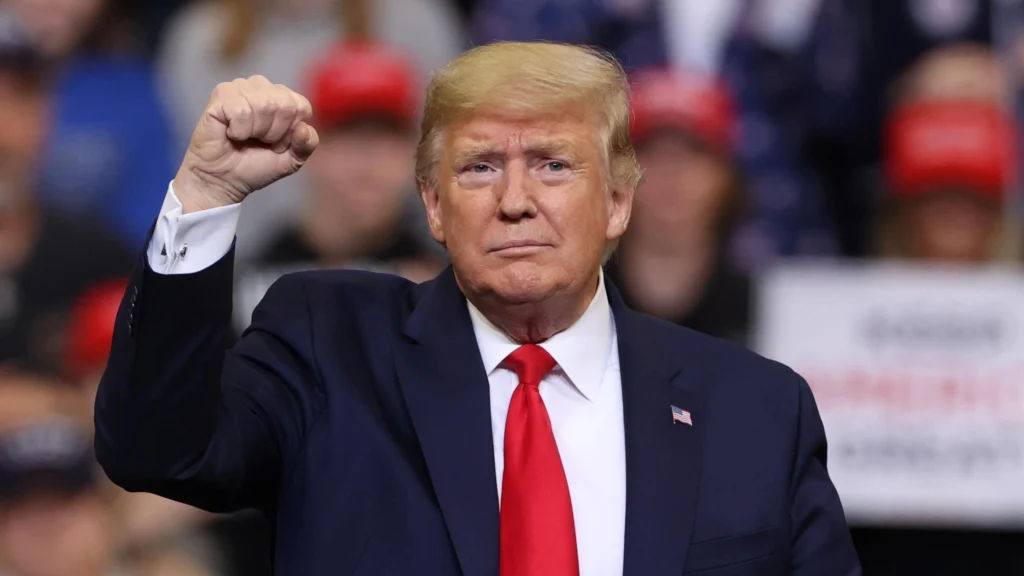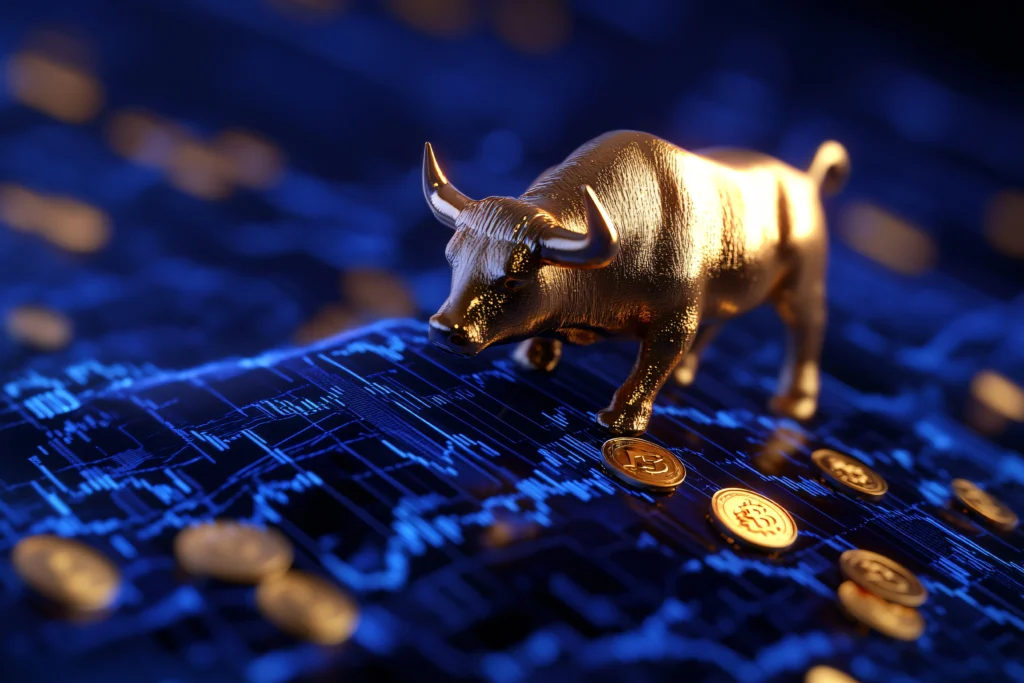In a striking development that’s catching the attention of global markets, gold has just hit a new record high. The surge comes on the heels of fresh political drama in the United States, as former President Donald Trump launched another wave of criticism against Federal Reserve Chairman Jerome Powell. These verbal attacks have rattled investor confidence and reignited concerns over the Fed’s independence, prompting many to flock to the safety of gold. In this article, we explore the key factors behind gold’s rise, the implications of Trump’s comments, and what this means for investors going forward.

Gold Soars to New High Amid Political Tensions
Gold prices have skyrocketed to an unprecedented level, signaling a strong wave of risk aversion sweeping through global markets. The rally, which saw gold breach previous record highs, has been fueled not by traditional economic indicators alone, but by growing political instability — particularly in the United States.
Investors are closely watching the renewed tensions between former President Donald Trump and Federal Reserve Chairman Jerome Powell. Trump’s repeated attacks on Powell have stirred uncertainty around the central bank’s independence and the future of U.S. monetary policy. These concerns have led to increased volatility in financial markets, prompting a flight to safety.
Historically, gold tends to perform well during times of crisis — whether economic, political, or geopolitical. With the 2024 U.S. election season intensifying and Trump signaling his influence over key financial institutions, market participants are becoming increasingly cautious. This environment has made gold, the traditional safe-haven asset, more attractive than ever.
Additionally, the weakening U.S. dollar and potential shifts in interest rate expectations have further supported the metal’s upward trajectory. Analysts believe that as long as political rhetoric continues to cast doubt on the stability of economic leadership, gold will remain a favored destination for investors seeking shelter from uncertainty.

Trump’s Criticism Sparks Market Jitters
Former President Donald Trump’s latest public comments have once again thrown financial markets into a state of uncertainty. In a series of interviews and social media posts, Trump criticized Federal Reserve Chairman Jerome Powell, accusing him of making poor monetary decisions and undermining the strength of the U.S. economy. His sharp rhetoric, while not tied to official policy, has nonetheless triggered concern among investors and analysts alike.
These attacks come at a sensitive time, as markets are already grappling with inflation, global tensions, and questions about future interest rate moves. Trump’s words have added fuel to the fire, raising fears that the Federal Reserve’s independence could be compromised if political pressure continues to mount—especially if Trump were to return to the White House after the 2024 election.
This renewed friction has heightened volatility in both the stock and bond markets, with investors quickly shifting toward more stable assets like gold. Traders see the possibility of erratic policy changes ahead, especially if the Fed is forced to navigate not just economic data but political interference. As a result, risk sentiment has deteriorated, leading to a noticeable pullback in equities and a corresponding spike in gold prices.
Trump’s ongoing feud with Powell reflects broader concerns about central bank credibility in a politically charged climate. For markets, perception is reality—and right now, that perception is driving money away from risk and straight into the safety of gold.

Why Gold Remains the Go-To Safe Haven
In times of uncertainty, gold has a reputation for being the ultimate safe haven—and for good reason. Unlike stocks or bonds, gold isn’t tied to any one country’s economy, corporate earnings, or central bank decisions. It’s a physical asset with intrinsic value, making it a reliable store of wealth when markets get shaky or headlines grow unpredictable.
Right now, with political tensions rising and economic uncertainty looming, gold’s appeal has surged once again. Trump’s repeated criticism of Federal Reserve Chair Jerome Powell has raised questions about the Fed’s ability to operate independently, unsettling both domestic and global investors. This has created a perfect storm for gold, which thrives when confidence in traditional financial institutions is tested.
Beyond politics, inflation continues to be a lingering concern. Although the Fed has raised interest rates to cool inflation, persistent price pressures in key sectors—from energy to housing—are keeping investors on edge. Gold, historically viewed as a hedge against inflation, becomes more attractive in this environment, especially when paired with fears of currency devaluation or prolonged economic stagnation.
Additionally, geopolitical tensions, such as ongoing global conflicts and trade disputes, add to the mix. These factors not only increase market volatility but also push investors toward assets that are seen as resilient over the long term. Gold’s limited supply and universal value make it an asset that retains trust even when other markets falter.
In short, when the world feels uncertain—whether due to political instability, inflation, or broader economic fears—gold shines brightest. Its steady demand and timeless value ensure it remains a cornerstone of risk-averse strategies.

What This Means for Everyday Investors
For the average investor, gold’s recent surge isn’t just headline news—it’s a signal worth paying attention to. While seasoned investors often look to gold as a strategic hedge, even casual market participants can learn from the current shift in sentiment. The record-breaking rally is a reflection of growing unease in global markets, and understanding what’s driving it can help everyday investors make smarter decisions.
First, it’s important to recognize that gold isn’t typically a high-growth asset. Instead, it plays a protective role in a diversified portfolio, acting as insurance during times of volatility. With political tensions flaring and uncertainty surrounding the future of U.S. economic policy, having some exposure to gold—or gold-related assets—can help balance risk.
There are several accessible ways for individuals to invest in gold:
- Physical gold: like coins or bullion, for those who prefer tangible assets.
- Gold ETFs: which track the price of gold and can be easily traded on the stock market.
- Gold mining stocks or mutual funds: offering indirect exposure to the gold market through companies involved in its production.
That said, it’s crucial not to overreact. Jumping into gold just because it’s hitting new highs can be risky if done without a strategy. Experts generally recommend allocating a modest percentage of a portfolio—usually 5% to 10%—to gold or commodities, depending on your risk tolerance and long-term goals.
In the end, the recent gold rally serves as a reminder of the importance of diversification. Political events, no matter how far removed they seem from your daily life, can ripple through global markets in unpredictable ways. By staying informed and balanced in your investment approach, you can better weather whatever uncertainties lie ahead.
Table of Contents
Celebrating Earth Day 2025: A Global Call for a Greener Tomorrow – trendsfocus
Gold price surges to new record high after Trump’s attacks on Jerome Powell | CNN Business